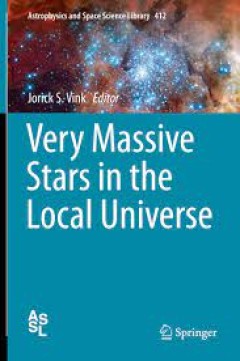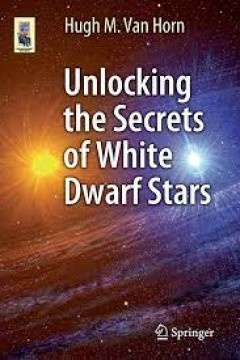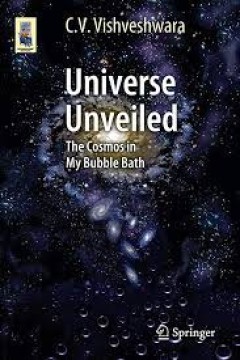Filter by

Virgin Galactic The First Ten Years
Thirty years ago when Sir Richard Branson called up Boeing and asked if they had a spare 747, few would have predicted the brash entrepreneur would so radically transform the placid business of air travel. But today, Branson flies airlines on six continents, employs hundreds of jets and, in 2014, was predicting that his spaceship company – Virgin Galactic – would soon open the space frontie…
- Edition
- -
- ISBN/ISSN
- 978-3-319-09262-1
- Collation
- XIX, 203
- Series Title
- -
- Call Number
- -

Viewing and Imaging the Solar System A Guide for Amateur Astronomers
Viewing and Imaging the Solar System: A Guide for Amateur Astronomers is for those who want to develop their ability to observe and image Solar System objects, including the planets and moons, the Sun, and comets and asteroids. They might be beginners, or they may have already owned and used an astronomical telescope for a year or more. Newcomers are almost always wowed by sights such as the…
- Edition
- -
- ISBN/ISSN
- 978-1-4614-5179-2
- Collation
- XIII, 256
- Series Title
- -
- Call Number
- -

Very Massive Stars in the Local Universe
This book presents the status of research on very massive stars in the Universe. While it has been claimed that stars with over 100 solar masses existed in the very early Universe, recent studies have also discussed the existence and deaths of stars up to 300 solar masses in the local Universe. This represents a paradigm shift for the stellar upper-mass limit, which may have major implications …
- Edition
- -
- ISBN/ISSN
- 978-3-319-09596-7
- Collation
- XI, 268
- Series Title
- -
- Call Number
- -

Unlocking the Secrets of White Dwarf Stars
White dwarfs, each containing about as much mass as our Sun but packed into a volume about the size of Earth, are the endpoints of evolution for most stars. Thousands of these faint objects have now been discovered, though only a century ago only three were known. They are among the most common stars in the Milky Way Galaxy, and they have become important tools in understanding the universe. Ye…
- Edition
- -
- ISBN/ISSN
- 978-3-319-09369-7
- Collation
- 34 b/w illustrations, 37 illustrations in colour
- Series Title
- -
- Call Number
- -

Universe Unveiled The Cosmos in My Bubble Bath
The bubbles were swirling all around me, massaging my body. As I luxuriated in this fantastic bath, I gasped realizing that those bubbles carried with them miniature galaxies bringing the entire Cosmos into my bathtub... Alfie is back. And so are George and other characters from the author’s previous book Einstein’s Enigma or Black Holes in My Bubble Bath. While the present book, Univers…
- Edition
- -
- ISBN/ISSN
- 978-3-319-08213-4
- Collation
- 34 b/w illustrations
- Series Title
- -
- Call Number
- -

Handbook of Archaeoastronomy and Ethnoastronomy
How human communities interpret what they perceive in the sky is vital in fulfilling humankind’s most basic need to comprehend the universe it inhabits, both from a modern scientific perspective and from countless other cultural standpoints, extending right back to early prehistory. Archaeoastronomy, which is concerned with cultural perceptions and understandings of astronomical phenomena, is…
- Edition
- -
- ISBN/ISSN
- 978-1-4614-6140-1
- Collation
- XXXVI, 2297
- Series Title
- -
- Call Number
- 520 HAN

The Formalisms of Quantum Mechanics
Quantum mechanics is probably the most successful physical theory ever proposed and despite huge experimental and technical progresses in over almost a century, it has never been seriously challenged by experiments. In addition, quantum information science ha s become an important and very active field in recent decades, further enriching the many facets of quantum physics. Yet, there is a s…
- Edition
- -
- ISBN/ISSN
- 978-3-319-10539-0
- Collation
- VII, 157
- Series Title
- Lecture Notes in Physics
- Call Number
- -

Dynamics of young star clusters and associations : Saas-Fee advanced course 42
Where do most stars (and the planetary systems that surround them) in the Milky Way form? What determines whether a young star cluster remains bound (such as an open or globular cluster), or disperses to join the field stars in the disc of the Galaxy? These questions not only impact understanding of the origins of stars and planetary systems like our own (and the potential for life to emerge th…
- Edition
- -
- ISBN/ISSN
- 9783662472903
- Collation
- xxiii, 348 pages
- Series Title
- -
- Call Number
- 520

Hollyweird Science: From Quantum Quirks to the Multiverse
Lighthearted, quirky, and upbeat, this book explores the portrayal of science and technology on both the big and little screen -- and how Hollywood is actually doing a better job of getting it right than ever before. Grounded in the real-word, and often cutting-edge, science and technology that inspires fictional science, the authors survey Hollywood depictions of topics such as quantum mechani…
- Edition
- -
- ISBN/ISSN
- 978-3-319-15071-0
- Collation
- XVI, 308
- Series Title
- -
- Call Number
- 523 KEV h

Eclipses, Transits, and Comets of the Nineteenth Century How America's Percep…
Grabbing the attention of poets, politicians and the general public alike, a series of spectacular astronomical events in the late 1800s galvanized Americans to take a greater interest in astronomy than ever before. At a time when the sciences were not yet as well established in the United States as they were in Europe, this public interest and support provided the growing scientific community …
- Edition
- -
- ISBN/ISSN
- 9783319083414
- Collation
- 345 pages
- Series Title
- -
- Call Number
- 520
 Computer Science, Information & General Works
Computer Science, Information & General Works  Philosophy & Psychology
Philosophy & Psychology  Religion
Religion  Social Sciences
Social Sciences  Language
Language  Pure Science
Pure Science  Applied Sciences
Applied Sciences  Art & Recreation
Art & Recreation  Literature
Literature  History & Geography
History & Geography